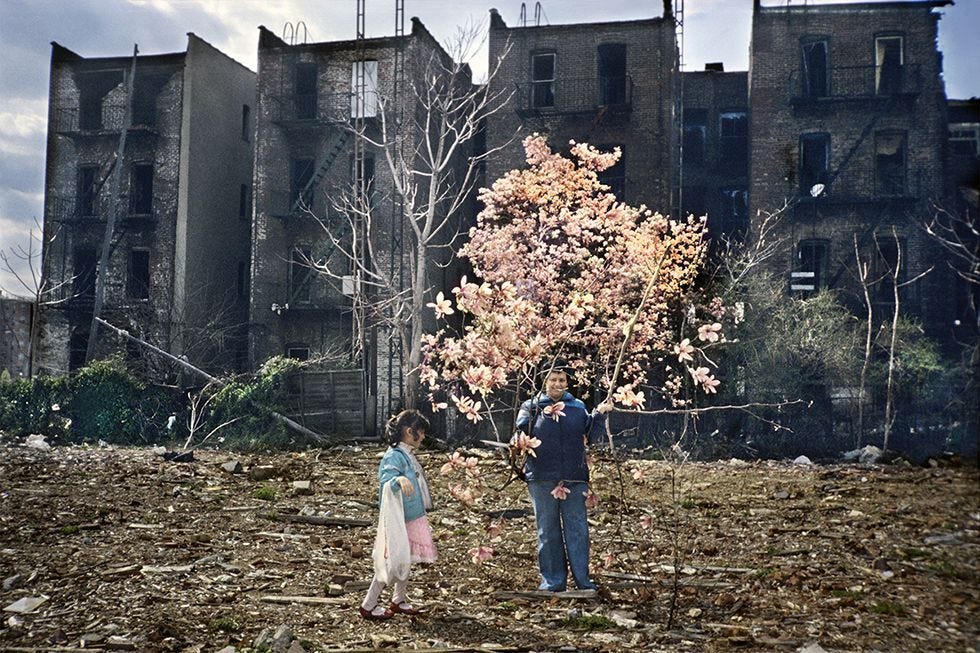Why subscribe?
Between 1965 and 1980, there were over a million fires in NYC. The era is known as the Fires Wars. The South Bronx is most notorious for the aftermath of that, as chronicled in the hit Netflix series The Get Down, but Bushwick, Brooklyn was just as devastated. This is the neighborhood that made me, and the one I return to again and again in my stories.
In the white America I escaped to when I was 13 (first to boarding school and later Columbia University for college), I was made to feel ashamed of my people and where I come from. I have spent my life unlearning this shame.
In the backyard of the building we lived in, next to a junkyard and across the street from a burnt out building that became a crack house in the mid-80s, my mother created a garden oasis. I became a writer in the plum tree of that yard, and by watching my mother tend to the land, I learned how to hold on to hope when you’re surrounded by neglect and suffering.
In that neighborhood, where La Borinqueña hung across avenues and salsa and freestyle boomed from passing cars, and from my second mom Millie, a self-proclaimed butch, I learned love for Puerto Rico and fierce pride in our culture. From Millie I learned to be brave. She’d grab the brim of her kangol and say, “Yo soy butch”, so she looked like she was dancing salsa but just with her shoulders. You had to be audacious to come out like she did in 1960s Lares, in a deeply Pentecostal family.
In my stories, I conjure my mother, Millie, and my old neighborhood. Bushwick before the $15 burger bars, yoga studios and organic markets; when we kids couldn’t go to the playgrounds because they were overrun by the dealers and fiends during the crack era, so we created our own play spaces in the junkyards that dotted the landscape and supermarket parking lots, demonstrating incomparable resilience and industriousness.
Bushwick where my mother made a living by selling pasteles en hoja in the winter, and in the summer, limbers in various flavors and fried treats like pastelitos, alcapurrias and piñones, using herbs and vegetables grown with her own hands.
In my writing, I do something my family didn’t do because they were too busy surviving--I write about our pain and suffering due to colonialism, racism, poverty and oppression. For me, this naturally leads to writing about joy, which is critical when we live in a world that tries to steal it at every turn.
In this newsletter, I share these these stories, info on my Writing Our Lives classes, musings about my life as a queer woman, a mother, a city girl living in the country; stories of grief, struggle, overcoming and more.
Stay up-to-date
You won’t have to worry about missing anything. Every new edition of the newsletter goes directly to your inbox.
Join the crew
Be part of a community of people who share your interests.
To find out more about the company that provides the tech for this newsletter, visit Substack.com.
(Photo credit: Meryl Meisler)


